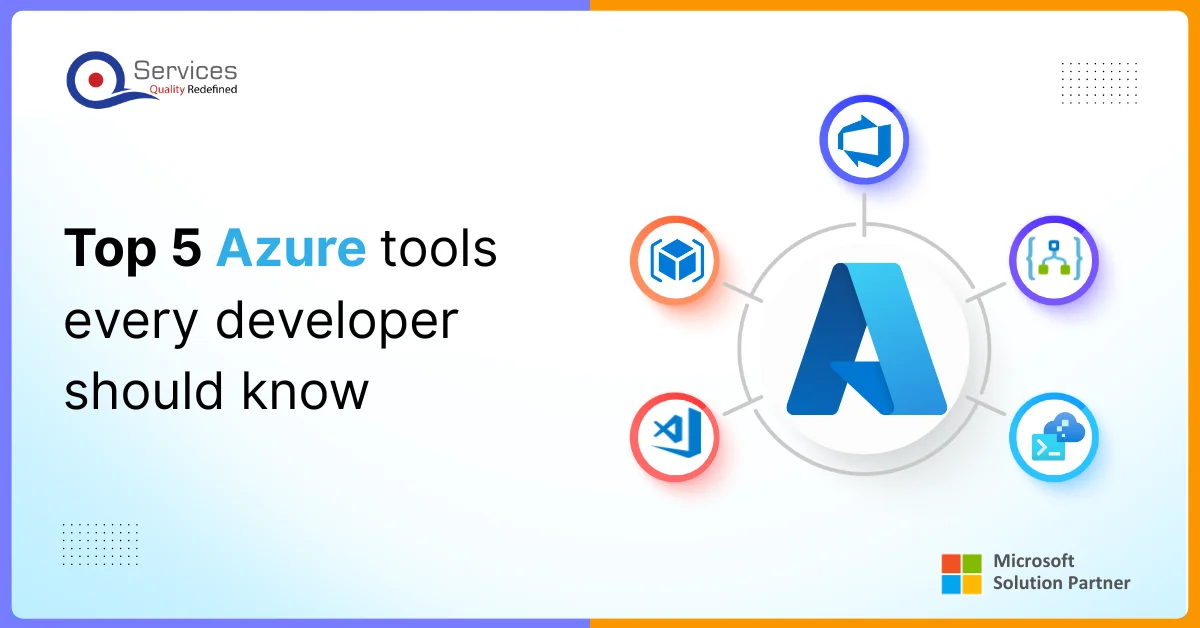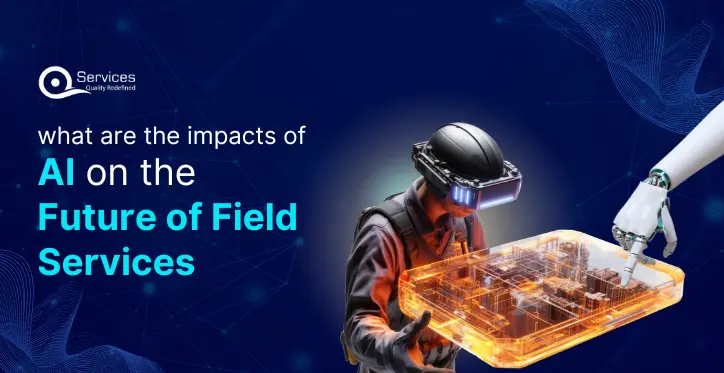
Home » AI Solutions for the Oil and Gas Industry: A Comprehensive Guide

The oil and gas industry has always been innovative, but today’s challenges demand a new wave of technological solutions. From price volatility to environmental regulations, companies must adapt to survive. AI for oil and gas is leading that transformation.
With AI’s ability to process large amounts of data quickly, companies can predict maintenance needs, automate routine tasks, and make data-driven decisions that improve operations across the board. This guide will explore how AI in oil and gas market is paving the way for the future of the industry.
AI is making waves in the oil and gas industry by solving big challenges like high operational costs, unpredictable market changes, and the growing demand for sustainability. Here’s how AI in oil and gas is stepping up:
One of the biggest ways AI helps is through predictive analytics. By crunching data from sensors and equipment, AI can predict when things might break down, so companies can fix issues before they happen. Keeping operations runs smoothly and saves money.
Safety is a huge deal in oil and gas, where even small mistakes can be dangerous. AI improves safety by spotting risks and keeping an eye on things in real-time. Some AI tools even use drones or robots to inspect dangerous areas, keeping workers out of harm’s way.
With more pressure to go green, AI is helping oil and gas companies cut their environmental footprint. AI tools can track emissions, find inefficiencies, and suggest ways to save energy, helping companies meet their sustainability goals without sacrificing performance.
AI in oil and gas wouldn’t be possible without some powerful technologies that make everything work:
ML is the backbone of Artificial intelligence in oil and gas industry. By looking at huge amounts of data, ML helps companies spot patterns and predict problems, like when equipment is about to fail. It also helps find new drilling opportunities by analyzing geological data.
The oil and gas industry produces tons of written reports, logs, and manuals. AI, powered by NLP, can analyze this info quickly, saving time and making operations more efficient. It even helps teams communicate better in real-time.
This technology is all about using visual data to monitor equipment, pipelines, and rigs. AI-powered cameras and sensors can detect problems like leaks or spills, keeping people safe by catching issues before they escalate. It’s also used for inspecting hard-to-reach places with drones.
AI is making a huge impact in the upstream part of the oil and gas industry, which includes exploration and drilling. Here’s how it’s helping to streamline these crucial processes:
In the past, interpreting seismic data to find oil and gas reserves took a lot of time. But now, with AI, companies can process seismic data faster and with more accuracy. AI analyzes huge amounts of data and helps pinpoint the best spots to drill. This means companies spend less time searching and more time extracting valuable resources.
Drilling for oil is a precise job, and even the smallest mistake can cause big problems. By constantly adjusting factors like pressure and speed based on live data, AI ensures that drilling operations are both safer and more effective. Resulting in less downtime and fewer mistakes.
AI isn’t just making exploration and drilling better but also optimizing the transportation and storage of oil and gas. Here’s how it helps in the midstream sector:
Even small issues in pipelines can lead to major problems, but AI helps by constantly monitoring pipeline conditions in real-time. Using sensor data, AI spots potential leaks or weaknesses early, preventing costly disruptions and keeping everything on track.
Once oil and gas are extracted, they need to move quickly to refineries and storage. AI helps optimize the logistics, cutting down on delays and unnecessary costs, while making sure oil and gas arrive where they need to be on time.
In the downstream sector, AI also plays a huge role in refining and distributing oil and gas products. It helps improve efficiency, reduce costs, and ensure that products reach customers in the right amounts and on time:
It’s important to know how much oil and gas will be needed in the future. AI uses market trends, customer behavior, and historical data to predict what’s coming. This helps companies adjust production, avoid shortages, and prevent overproduction, so they can meet customer needs without excess.
AI helps streamline the whole supply chain, from the refinery all the way to the customer. It tracks storage and transportation to make sure everything runs smoothly. By keeping products in the right place at the right time, AI helps cut costs and reduce waste.
Below are some artificial intelligence use cases in oil and gas industry. Let’s have a look:
AI keeps track of equipment health and predicts potential failures, preventing unexpected breakdowns and lowering maintenance costs. This is a top artificial intelligence use case in oil and gas.
With real-time safety monitoring, AI can quickly detect risks such as leaks and equipment failures, helping maintain worker safety and meet regulatory requirements in the AI oil and gas industry.
AI’s digital twins allow companies to simulate real-world conditions, improving decision-making and minimizing risks—one of the key artificial intelligence use cases in oil and gas.
AI helps monitor and reduce emissions, improving energy efficiency and supporting sustainability efforts while still meeting global energy needs.
Get free Consultation and let us know your project idea to turn into an amazing digital product.
AI is significant factor in the oil and gas industry, enhancing everything from exploration to operational efficiency. Companies across the sector are embracing AI to stay competitive and achieve smarter, more sustainable outcomes.
Schlumberger leads the way in AI oil and gas technologies, using machine learning to optimize exploration and resource extraction. Their AI-powered seismic data processing helps identify reserves quickly and accurately.
As a pioneer in AI for asset management, Baker Hughes uses predictive maintenance to improve equipment reliability. Their AI solutions reduce downtime and maintenance costs, increasing operational efficiency.
Known for integrating AI into well management and reservoir simulations, Halliburton enhances production efficiency, optimizes drilling, and ensures better safety practices in oil and gas operations.
Tachyus optimizes oil extraction using AI technology to manage reservoir data and improve resource efficiency. Their AI-driven tools help companies unlock better performance and reduce environmental impact.
SparkCognition specializes in providing AI-powered solutions for predictive maintenance, operational efficiency, and safety in the oil and gas sector, helping companies make data-driven decisions and reduce costs.
AI is becoming a big part of the oil and gas industry. Companies are using it to make everything from drilling to maintenance smarter and more efficient. Here’s how AI is making a difference:
Nowdays several companies are using AI to help with tasks like predicting when equipment will break down or finding oil more easily. These technologies are helping companies in every aspects. As AI becomes more useful, more companies are adopting it.
North America is leading the way with AI in oil and gas. Companies here are using AI to make everything from drilling to production more efficient. With great technology and infrastructure, North America is a good place for AI to grow in this industry.
In the Middle East, AI is helping big oil companies improve their operations and save costs. AI helps companies get better results from their oil fields, and it’s helping to predict when equipment needs fixing to avoid unexpected issues.
One challenge is that many oil and gas companies still use old systems that are hard to connect with new AI tools. Updating or changing these systems can take a lot of time and money.
Implementing AI can be expensive, particularly for smaller companies. The cost of new tools and training can prevent some businesses from adopting AI quickly.
While AI is transforming the oil and gas industry, there are several obstacles companies must navigate to fully integrate it.
AI thrives on clean and organized data, but many oil and gas companies have data scattered across different systems. This makes pulling it all together and cleaning it up for AI pretty tough. Without this, AI just can’t deliver the best insights.
Implementing AI requires skilled workforce in data science and machine learning. However, many employees in the industry may not have the necessary skills to operate AI systems or interpret the data they generate. Reskilling the workforce is significant for successful AI adoption.
The upfront costs of implementing AI, including software, hardware, and training, can be prohibitive for some companies. While AI offers long-term savings and efficiency, the initial investment can be a roadblock, particularly for smaller companies or those with limited budgets.
The oil and gas industry is severly relying on AI to improve efficiency and drive innovation. As AI technology evolves, it’s helping companies transition to renewable energy sources while optimizing operations.
Artificial intelligence in oil and gas is becoming an essential tool for transitioning to renewable energy. By optimizing how companies use both fossil fuels and renewable energy sources, AI reduces carbon emissions and helps companies make better, more sustainable energy choices. AI is making the move toward cleaner energy more feasible, without sacrificing operational efficiency.
Predictions for the Future
By 2030, AI in oil industry operations will be far-reaching. We will see fully automated rigs that reduce human error and increase productivity, predictive maintenance becoming the industry standard, and the use of digital twins in large-scale operations. With AI-powered systems becoming the backbone of decision-making, oil and gas companies will work smarter, faster, and more efficiently.

Artificial intelligence in oil and gas is helping companies rethink how they approach everything from drilling to energy production. The oil and gas industry AI is enabling smarter decisions, improving efficiency, and helping the sector transition towards more sustainable, environmentally friendly practices.

Pipeline failures can be expensive and harmful to the environment. Companies are using IoT applications in the oil and gas industry to prevent these breakdowns and stay ahead of problems.
![Azure IoT vs AWS IoT vs Google IoT Pricing: Feature Comparison Chart for Enterprise [2025]](https://www.qservicesit.com/wp-content/uploads/2025/03/Microsoft-Teams-vs-Slack-vs-Zoom-TCO-Analysis-for-Enterprise-Organizations-2.webp)
The Internet of Things (IoT) helps businesses run better by connecting devices, collecting information, and improving choices. But picking the best IoT cloud provider can be confusing. The main three are AWS IoT vs Azure IoT vs Google IoT.

In this blog, we’ll explore how these advances are shaping the future of field services and how companies are adapting to stay ahead in a competitive market. What are the key changes that businesses need to embrace to stay relevant and efficient?
AI improves exploration by analyzing seismic data, predicting reservoir locations, and identifying potential drilling sites more accurately.
Benefits include increased efficiency, reduced operational costs, enhanced safety, and improved production rates.
AI enhances safety by monitoring operations in real-time, predicting hazardous situations, and automating safety protocols.
AI optimizes supply chain management by improving demand forecasting, inventory management, and logistics planning
AI analyzes drilling data to optimize drilling parameters, reduce non-productive time, and enhance drilling efficiency.
AI helps in reservoir modeling, predicting reservoir behavior, and optimizing extraction processes.
Key technologies include machine learning, neural networks, computer vision, and natural language processing.
AI monitors pipelines for leaks, corrosion, and other issues, ensuring timely maintenance and reducing risks.
The future includes more advanced AI applications, increased automation, and greater integration with other technologies like IoT and blockchain.
AI optimizes production by analyzing data to adjust production parameters and improve efficiency.
AI reduces operational costs by improving efficiency, reducing downtime, and optimizing resource usage.
AWS Lambda also has some limitations, like cold start latency and resource constraints (e.g., memory and execution time), which can affect the performance of certain workloads.

Founder and CEO

Chief Sales Officer
